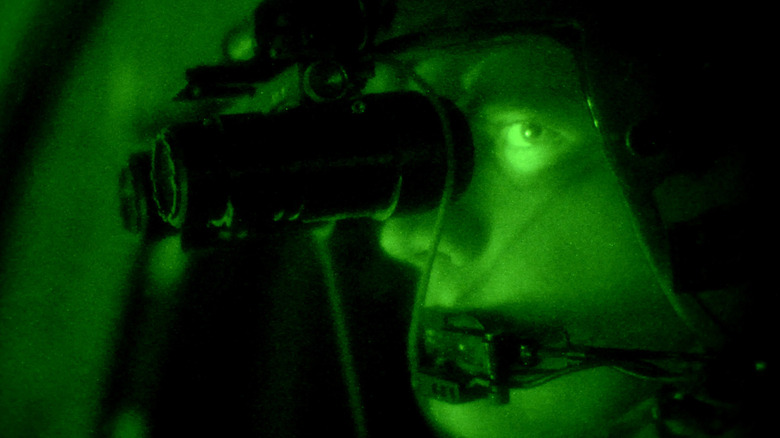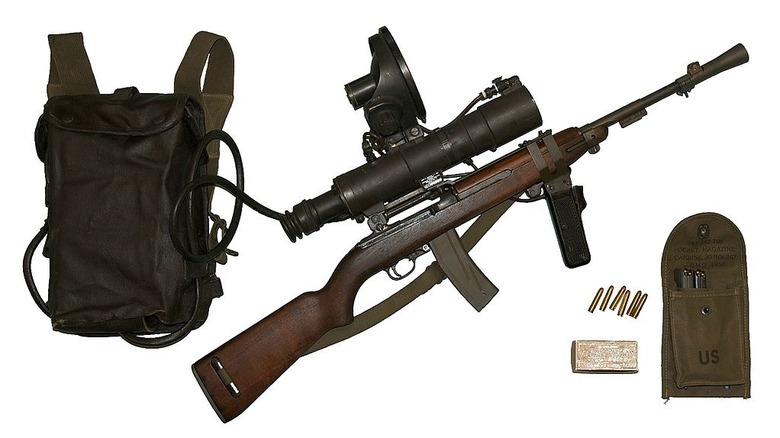When Were Night Vision Goggles First Used In The Military?
There was once a time when night vision goggles — with their almost magical ability to see in the dark — were only available to the military and law enforcement. Today, that technology is so ubiquitous, it's available to the general public in a mind-boggling array of forms, including night vision binoculars. Believe it or not, night vision devices (NDV) have been around in some very peculiar forms since the 1930s.
Night vision goggles (NVGs) are a device that resembles binoculars strapped to the head and have had an equally long and interesting journey through history. Technically, the very first "goggles" used by a military appeared in 1939 in the Soviet Union. A truly usable pair of NVGs wouldn't hit the battlefield until U.S. forces fielded them in the 1970s.
The Soviet device was merely an early prototype, but it was cleverly developed into different forms. While the mobile version resembled goggles, it was cumbersome and required a soldier to wear a huge, disk-shaped electronic-optical light converter on their chest and carry a large battery pack on their back. While the mobile version resembled goggles, it was cumbersome and required a soldier to wear a huge, disk-shaped electronic-optical light converter on their chest and carry a large battery pack on their back. Another version hung from the roof of a vehicle, allowing the driver to look through them. A 250-watt infrared headlamp was mounted on top of the roof, and the battery pack was stowed inside the vehicle.
It took time for night vision to come of age
The German electrical company, AEG, began developing night vision devices for the military in 1936. It completed its first successful prototype three years later. It wasn't a set of goggles, though, but an infrared headlamp with a viewer mounted to a tank so the driver could see where he was going. A smaller version (ZG 1229 Vampir) would later be attached to the MP44/StG 44 assault rifle, but very few were produced. The Soviets created something similar for their tanks, so the drivers could see at night, which included infrared periscope glasses and a set of infrared searchlights. Other versions of early NVDs included attaching large infrared spotlights to the bed of a truck.
Meanwhile, the U.S. military developed what would become the "sniper scope," a device that connected to a rifle complete with a spotlight and battery pack. However, only 300 were shipped out in 1945 to soldiers in the Pacific. A far cry from the Enhanced Night Vision Goggle-Binocular (ENVG-B) used by the U.S. Army today. Keep in mind that night vision and thermal vision are two different things. NVDs magnify existing reflected light and won't work in total darkness. Thermal imaging detects heat (infrared radiation) and converts the temperature variations into images.
These first NVDs were equipped with "Generation Zero" technology, only capable of amplifying existing light 1,000 times. By comparison, today's Generation Three devices can amplify light as much as 50,000 times or more. Advances in image intensification technology in the 1950s resulted in creating a device that wasn't too bulky for soldiers to wear in the field during the Vietnam War.

